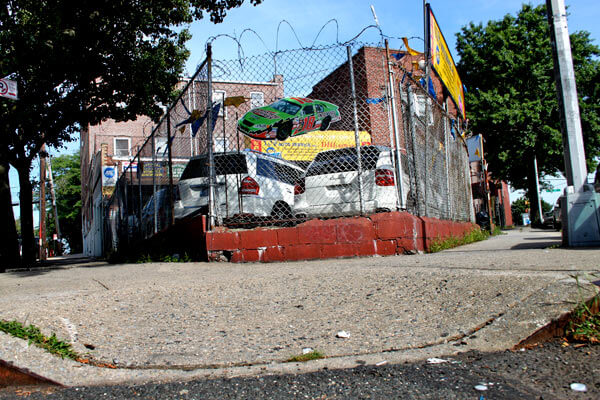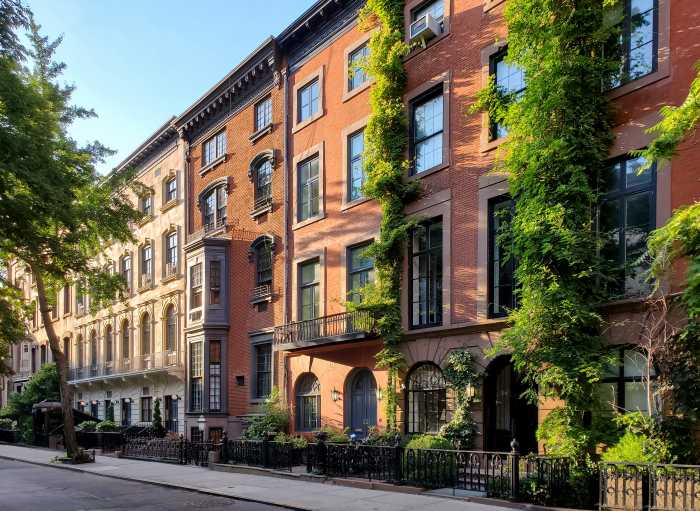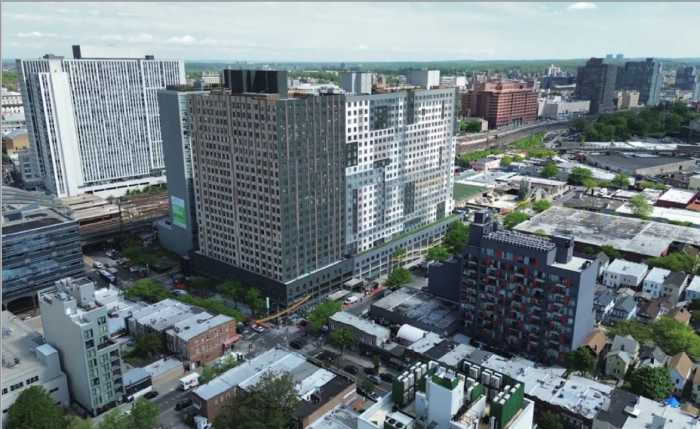By Rich Bockmann
It’s safe to say that every square inch of New York City real estate has been considered for its potential value, but a small plot of land on the corner of an oddly shaped block in Corona puts a new perspective on the obsession over square footage.
One way to look at the city is through its tax maps. Every borough is broken down into blocks and every block is divvied up into a number of lots.
But the act of mapping them is more an art than a science, and across the city’s maps there are more than 1,000 leftover slices of the Big Apple known as “gutterspaces” or “sliver lots” – idiosyncrasies of surveying that cannot be developed because they are either too small, too oddly shaped or inaccessible.
“They’re the results of discrepancies of a survey done for a lot,” explained Queens Village-based surveyor Jarko Krawczyk. “All these lots [on a block] are supposed to create one closed complex, but when you treat every single one, you start to get overlapping, creating gaps because of the level of calculation needed to be done for some of these properties.”
“The chance of making an error is big, especially on lots that are irregular,” he added. “Every surveyor is going to treat the information he has differently.”
Surveyors like standard and uniform lots, but with its miles of coastline and street grids that collide with each other maniacally — Krawczyk said the winding streets of Jamaica Estates are a surveyor’s nightmare — Queens has a disproportional share of these virtually unusable plots.
One of the tiniest tax lots in the city is wedged into a nook like the last piece of a puzzle between an auto-shop parking lot and the corner of Van Doren and 108th streets in Corona.
At just under 1 square foot it is unique for its size — other gutterspaces can run up to several hundred square feet — but is otherwise treated much the same as any other lot that gets assessed for taxes each year. (In case you were wondering, property taxes on a square-foot lot in Corona would run you about a $2 and change a year.)
There are 510 gutterspaces in the borough totaling a little more than 99 acres worth of space — or about the size of the beach along the Atlantic coastline of the Rockaway Peninsula — according to the land-access advocacy group 596 Acres, which meticulously mapped out every last one. Staten Island, Brooklyn, Manhattan and the Bronx combined account for another 168.7 acres of lost space.
But the fact that none of these slivers of property are likely to attract any real estate investors does not mean they are without value. Most of the city’s gutterspaces are owned by the Department of Citywide Administrative Services, which used to unload them — along with more profitable plots — through public auctions.
In the 1970s, a Manhattanite named Jack Gasnick reportedly bought nearly 30 gutterspaces the city sold through public auctions, including plots in Jamaica Bay, Fresh Meadows and Elmhurst, where an apple tree grew.
In 1973 and 1974, downtown artist Gordon Matta-Clark purchased 14 gutterspaces in Queens and one in Staten Island for $25 to $75 apiece through public auctions the city held. He dubbed these properties his “Fake Estates” and intended to amass the maps, deeds and other documentation into an “anarchitectual” exhibit.
Matta-Clark died of cancer in 1978 before seeing his vision completed, but in 2005 the Queens Museum of Art exhibited his pieces, complete with tours of the sites in the borough. In 2010, Albany passed a law allowing the city to sell these lots directly to adjacent property owners, and DCAS said it no longer auctions off gutterspaces.
But Matthew Higgs, director of a downtown art space Matta-Clark founded in 1970, said a shoebox-sized plot of land would certainly pique the artist’s interest.
“It’s an amazing idea that you could own 1 square foot of New York City. You can see why people buy parts of the desert. It’s part of the American myth that everyone can own property, albeit just 1 foot square,” he said. “It’s paradoxical and comedic, but at the same time it’s a real, tangible piece of the city.”
Reach reporter Rich Bockmann by e-mail at rbockmann@cnglocal.com or by phone at 718-260-4574.





































